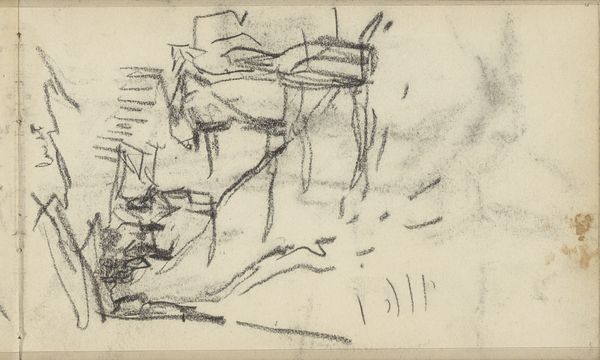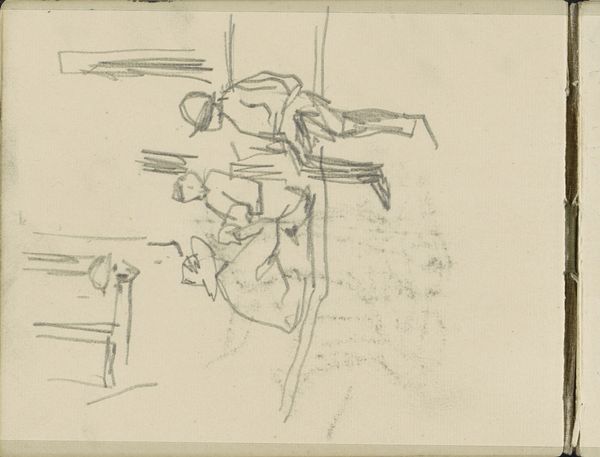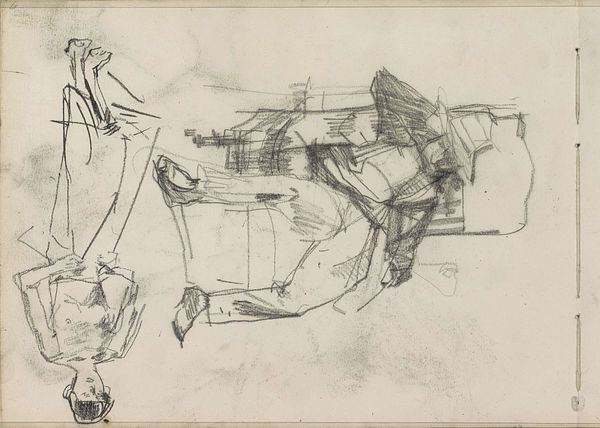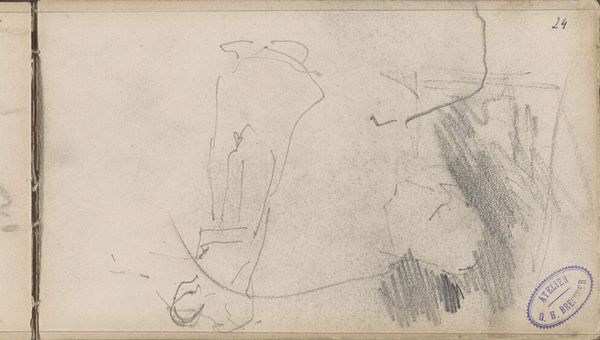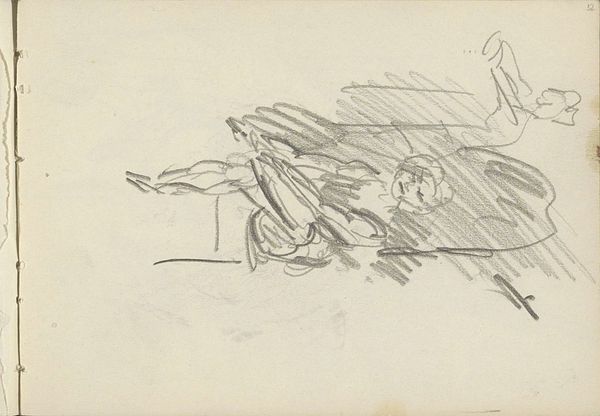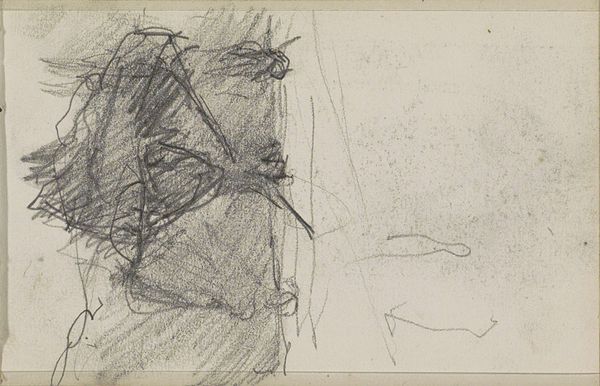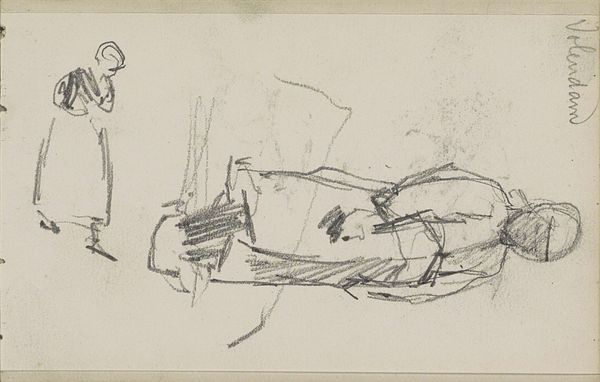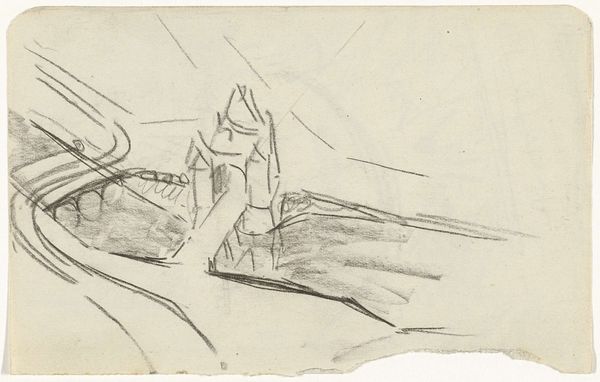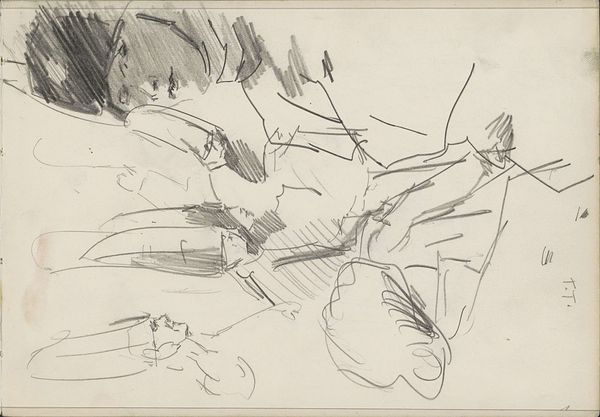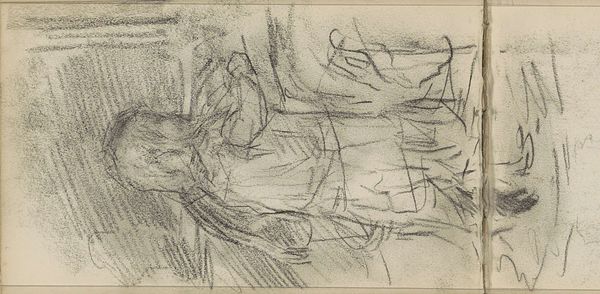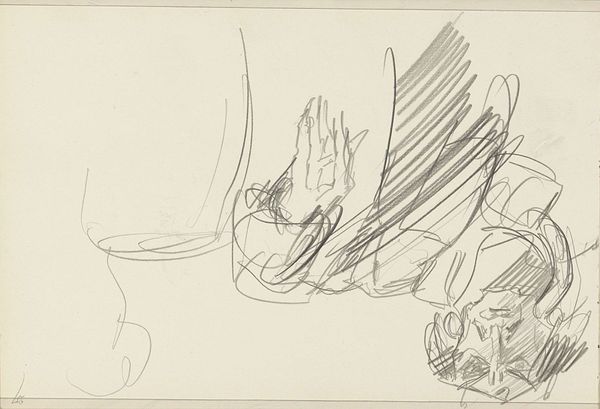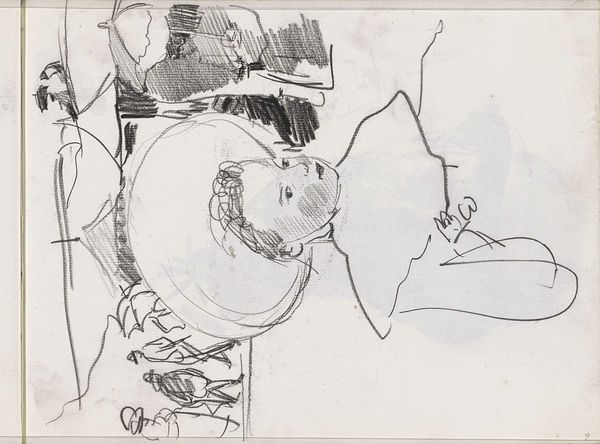
Copyright: Rijks Museum: Open Domain
Curator: This pencil sketch, entitled "Vrouw in een interieur" or "Woman in an Interior," dates to around 1895-1900 and is attributed to Carel Adolph Lion Cachet. You can find it here at the Rijksmuseum. What are your initial thoughts? Editor: It feels ephemeral. There's a softness, a lightness, in the rendering. The imprecision of the lines gives the whole scene a dreamlike, transient quality. It suggests a fleeting moment captured from everyday life. Curator: Indeed. From a formal perspective, observe how the artist uses diagonal lines to create depth and direct the viewer's eye. The composition adheres to no classical structure; it is asymmetric. What do you make of his clear emphasis of light and shadow? Editor: It's revealing how such simple materials can evoke such depth and quiet intensity. The sketch almost appears unfinished; one is aware of the process. The relative lightness of the materials belies the complex reality of woman's labor inside a domestic space, the amount of repetition involved... We see only the end product but often fail to notice the means. Curator: That speaks to Cachet’s involvement with impressionism, wouldn't you agree? Notice how, through the contrast between areas of dense shading and sparsely defined spaces, a tangible tension arises. This contributes to a visual dialogue exploring form versus absence of form, no? Editor: Definitely. And that reminds me of the class dynamics that enable Cachet, most likely upper-class, to portray a scene of a domestic worker, further displacing labor from sight through style. The very materials of "high art" – pencil and paper – underscore the removed social context of this seemingly candid sketch. The laboring hand here holds the pencil, not tools associated with cleaning. Curator: A powerful point. By intentionally leaving areas undefined, the drawing transcends the specifics of place. Editor: Perhaps. In any event, by examining the work, we not only grasp Lion Cachet’s unique method but are compelled to acknowledge and contemplate the socio-economic backdrop of its conception. Curator: Precisely. "Vrouw in een interieur" serves as a stark reminder of art's intrinsic ability to serve both as a mirror to our visual senses, and an X-ray illuminating underlying societal conditions.
Comments
No comments
Be the first to comment and join the conversation on the ultimate creative platform.

